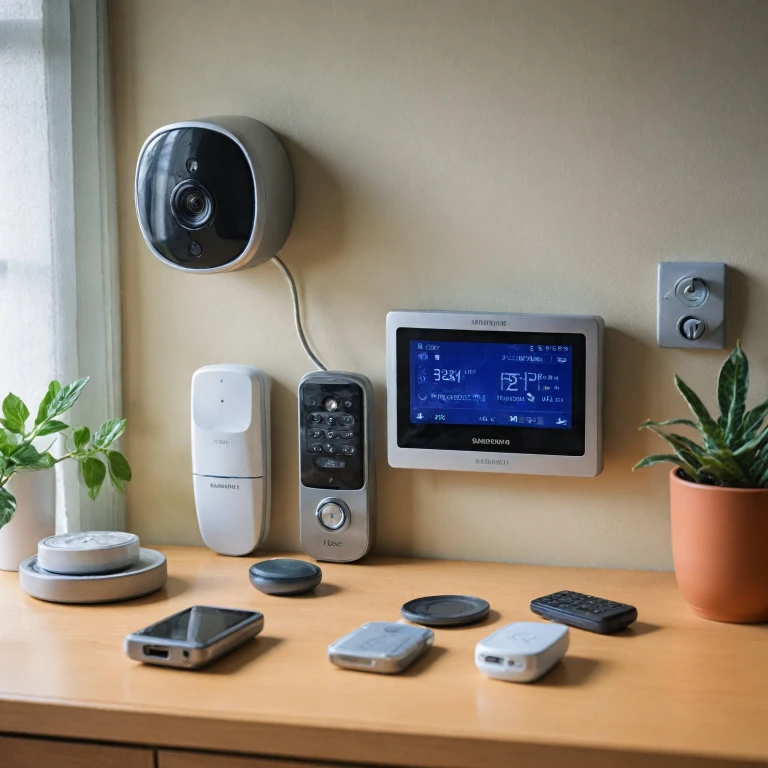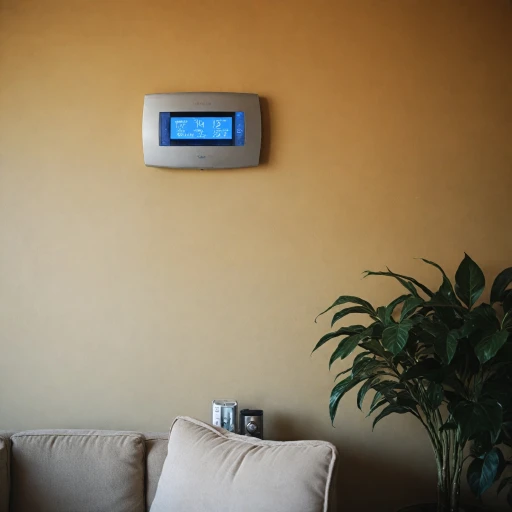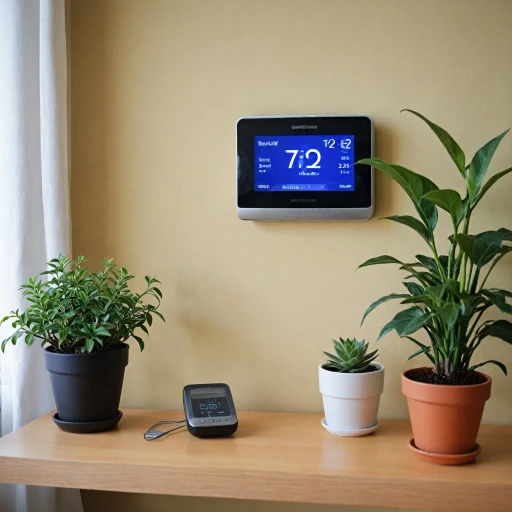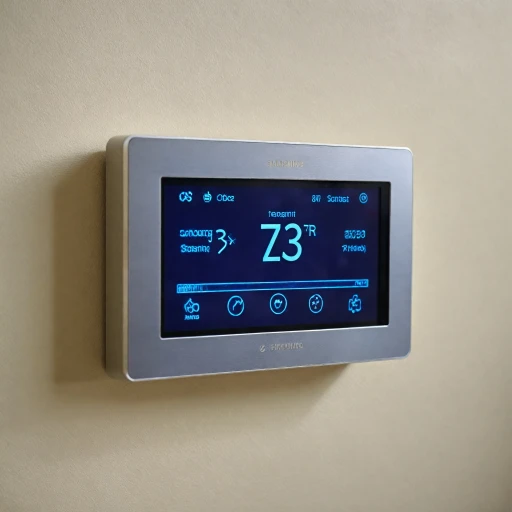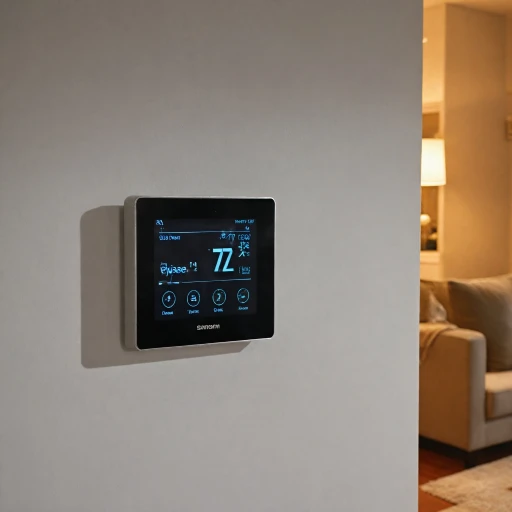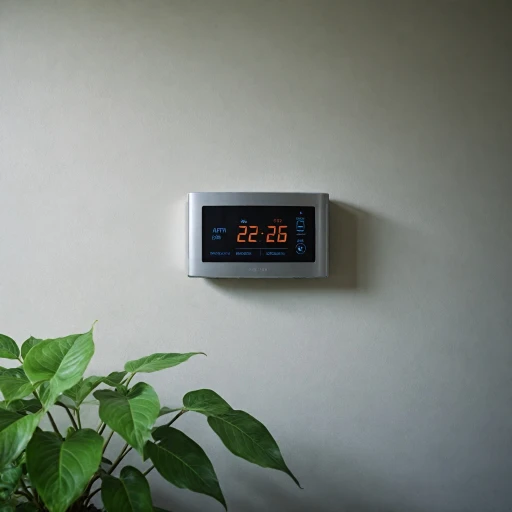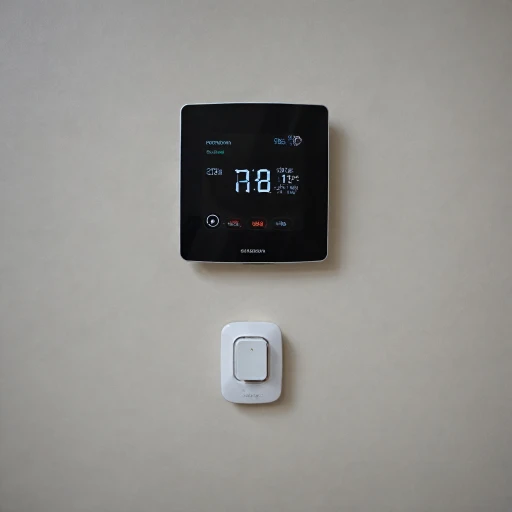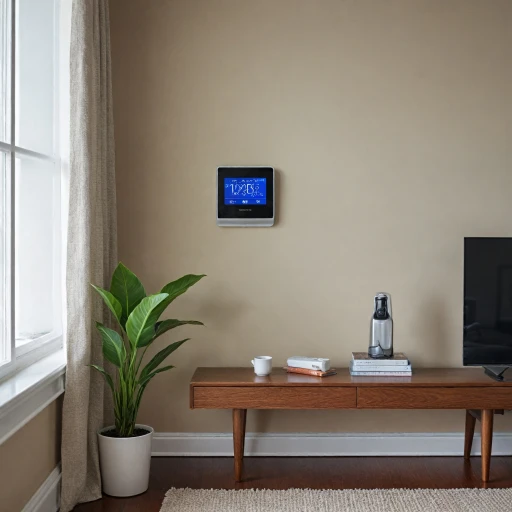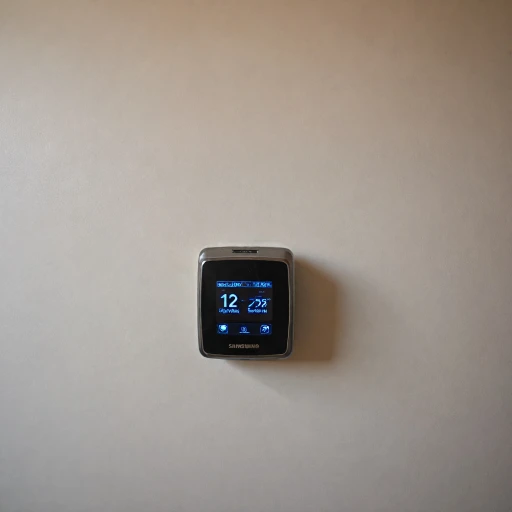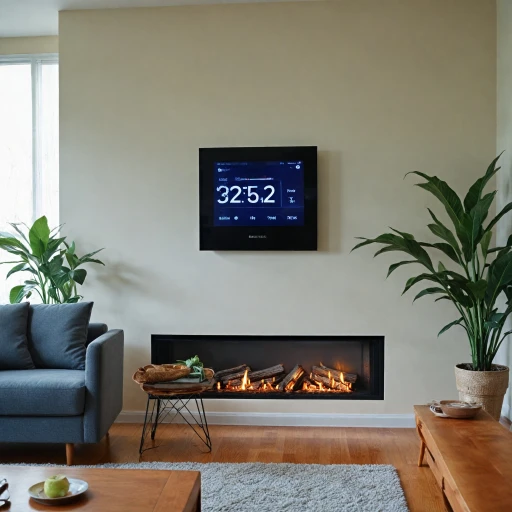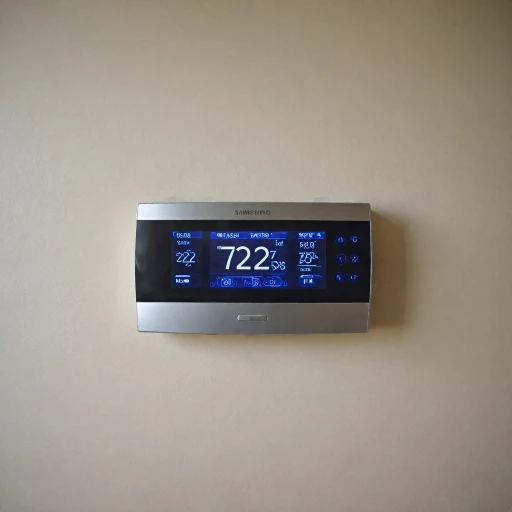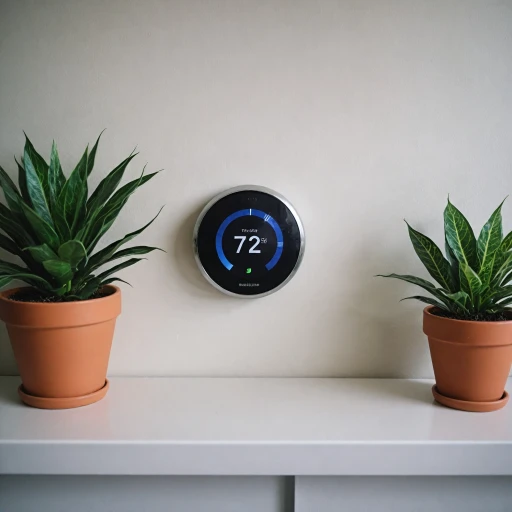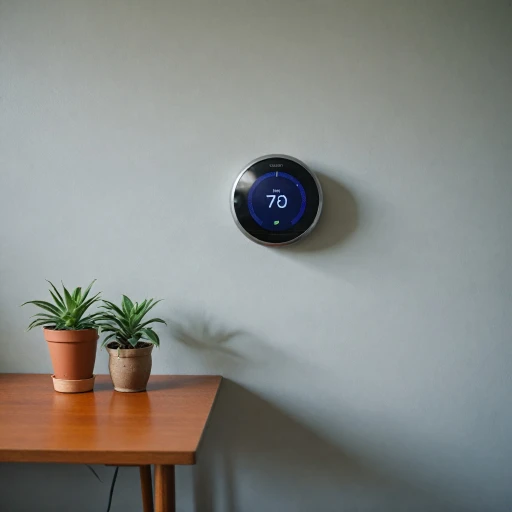
The Role of Smart Thermostats in Modern Homes
The Essential Role of Smart Thermostats in Homes Today
Smart thermostats are a crucial component in modern homes, offering convenience, efficiency, and a higher level of control over indoor environments. With increasing focus on energy efficiency and smart home automation, these devices are transforming the way homeowners manage their household energy consumption. Smart thermostats contribute significantly to the comfort and security of a modern home. They are more than just a means to control temperature; they provide user-specific settings that adapt to the homeowners' lifestyle. Features such as user-friendly interfaces and compatibility with wireless systems have made them popular in the market. These devices work seamlessly with home security systems, such as the Honeywell alarm systems. By integrating with devices like the Honeywell Ademco Vista and Honeywell Lynx, smart thermostats enhance security measures, allowing homeowners to control various aspects of their home environment remotely through a touch user interface. For more in-depth insights, explore the benefits and features of the Honeywell 5000 thermostat. Several benefits of smart thermostats include:- Energy Efficiency: Smart thermostats learn and adapt to your heating and cooling preferences, optimizing energy use and reducing costs.
- Remote Accessibility: Through smartphone apps or other devices, users can monitor and adjust their thermostat settings from anywhere.
- Integration Capabilities: These thermostats seamlessly integrate with other smart devices, offering a cohesive smart home experience.
- Alerts and Monitoring: Receive notifications and monitor systems honeywell, including glass break sensors and motion detectors, enhancing home security monitoring.
Integrating Smart Thermostats with Honeywell Alarm Systems
Seamless Integration of Smart Thermostats and Honeywell Alarm Systems
Integrating a smart thermostat with a Honeywell alarm system, like the Honeywell Lynx Touch or the Ademco Vista panel, not only boosts your home's comfort but also enhances its security. Smart thermostats allow for efficient monitoring and control of your home's temperature through wireless systems, adding to your security system's value.
Understanding the Honeywell user manual is crucial for this integration. The user guide provides a step-by-step guide on how to connect different devices via the same network. A quick installation process can connect the thermostat with the door sensors, motion detectors, and other components of your Honeywell security system.
Once connected, alerts on temperature changes can be triggered alongside your security alarm system, maximizing the monitoring potential. The manual Honeywell guide can assist users in setting these guidelines to ensure a seamless connection between the thermostat and the security alarm systems Honeywell offers.
Using the Honeywell Lynx or the Ademco Vista, you can find options for connecting touch user interfaces and alarm monitoring systems. These elements work together to enhance home security and energy efficiency, giving you peace of mind.
For further insights on effective integration of your smart home devices, consider exploring this comprehensive resource. It provides additional context on understanding some of the complex systems like the Honeywell Vista and their functionalities.
Navigating the Honeywell Alarm System Manual
Decoding the Honeywell Alarm System Manual for Efficient Use
The Honeywell alarm system manual is a crucial resource for both beginners and seasoned users of their security systems. Navigating through the manual can empower you to make the most of your system’s capabilities, including integrating with modern devices like smart thermostats.
Before diving into specifics, understanding the structure of the Honeywell manual can make the process smoother. Typically, it starts with a comprehensive user guide that outlines different systems such as the Ademco Vista and Lynx Touch, explaining their core components like wireless key, sensors, and alarm keypads. By familiarizing yourself with these initial sections, you establish a foundational grasp of your system.
Honeywell's installation guide is particularly handy for setting up and configuring with other smart technologies. From linking to smart thermostats to aligning with security alarm features, every step requires meticulous attention to the sequence outlined in the guide. The installation can support the integration by employing control system settings, allowing for seamless interaction between the thermostat and the alarm system.
- Quick Tips for Using the Manual: Make use of the index contained in the manual for swift navigation between sections.
- Ensure all terms such as motion detectors, door sensors, and glass break sensors are clear, possibly cross-referencing with English manual versions if needed.
If you encounter any difficulties understanding the guide Honeywell, troubleshooting tips in the 'Common Issues' section can provide you with quick resolutions. Whether dealing with security alarm issues or modifying settings on an alarm keypads, the manual is designed as a user manual—a reliable ally in maintaining optimal performance.
Integration with smart home devices is a trend that sees constant development. For regular updates and specific uses, additional resources such as online forums or dedicated digital articles on platforms like smart thermostat guru can provide user-driven insights that may not be readily available within the manual.
Common Issues and Troubleshooting Tips
Addressing Common Issues with Honeywell Alarm Systems
Even the most advanced alarm systems, like those from Honeywell, can encounter issues that are frustrating for users. Whether it's a wireless key or glass break sensor not functioning properly, it's essential to know how to troubleshoot effectively. The user guide can be an invaluable resource in resolving common problems.
For issues regarding signal loss with wireless sensors, ensure that the sensors are within range of the control system. Signal interference can occur if there are large obstacles between the sensors and the control system. Checking the manual for installation advice may offer solutions to signal obstructions.
Another frequent problem involves the Honeywell Vista system keypads. If the keypad isn't responding, double-check its connections. The Ademco Vista user guide provides step-by-step guidance on ensuring secure connections and proper power supply.
Door sensors, crucial for security alarm systems, may sometimes fail to register when a door is ajar. Proper alignment of the sensor and magnet is vital for correct functioning, as outlined in the Honeywell alarm manual. Additionally, consulting the quick guide can help navigate the process of recalibrating or replacing faulty sensors.
Furthermore, if you encounter issues with monitoring through the Lynx Touch or other touch user systems, reviewing the relevant sections in the Honeywell Lynx user guide can offer solutions. From resetting touch keypads to diagnosing monitoring faults, the troubleshooting tips are comprehensive and user-friendly.
Maximizing Energy Efficiency with Smart Thermostats
Optimizing Your Home's Energy Use
Smart thermostats have revolutionized the way we manage our home’s energy consumption. By learning your schedule and preferences, these devices can significantly reduce energy waste. When integrated with systems like the Honeywell alarm, they offer even more control and efficiency.
Smart Scheduling and Remote Access
One of the key features of smart thermostats is their ability to create schedules that align with your daily routine. This means your heating or cooling system only runs when necessary, saving energy and reducing costs. Additionally, with remote access via smartphone apps, you can adjust settings on-the-go, ensuring comfort and efficiency even when plans change.
Integration with Honeywell Systems
Integrating a smart thermostat with a Honeywell alarm system can enhance your home's energy efficiency. The synergy between these systems allows for more precise control over your environment. For instance, when your Honeywell security system detects that no one is home, it can signal the thermostat to adjust the temperature accordingly, conserving energy.
Utilizing Advanced Features
Many smart thermostats come equipped with advanced features such as motion detectors and door sensors. These can be used to optimize energy use further. For example, motion detectors can help determine when rooms are occupied, adjusting the temperature only in those areas. Similarly, door sensors can alert the system to adjust settings when doors are left open, preventing unnecessary energy loss.
Monitoring and Adjustments
Regular monitoring of your energy usage through the thermostat’s app can provide insights into your consumption patterns. This information is invaluable for making informed decisions about adjustments to your settings. The Honeywell user manual and guide can offer additional tips on maximizing these features.
Conclusion
By leveraging the capabilities of smart thermostats and integrating them with systems like Honeywell, homeowners can achieve significant energy savings. This not only reduces utility bills but also contributes to a more sustainable lifestyle.
Future Trends in Smart Home Technology
Emerging Innovations in Smart Home Technology
As smart home technology evolves, several exciting trends are shaping the future of how we interact with, control, and secure our living spaces. Here's a glimpse into the innovations that are set to redefine smart home ecosystems, including smart thermostats.
- Integration and Interoperability: Modern homes are increasingly seeking seamless integration of devices. Smart thermostats are being designed to work harmoniously with security systems like Honeywell's alarm systems, leveraging features from wireless sensors to motion detectors for optimal performance.
- Artificial Intelligence and Machine Learning: AI is playing a crucial role in enhancing smart thermostats. By learning from user patterns and preferences, these devices can optimize heating and cooling automatically, beyond what a standard manual adjustment can achieve.
- Enhanced User Interfaces: Intuitive touch interfaces on devices like the Lynx Touch and Ademco Vista are making it easier for users to navigate through complex systems. Coupled with detailed guides and manuals, these interfaces improve user experience significantly.
- Energy Monitoring and Management: A key feature in modern smart thermostats is advanced energy monitoring. They can provide real-time insights into energy consumption, allowing homeowners to make informed decisions to enhance energy efficiency.
- Advanced Security Features: The integration of additional security elements like glass break sensors and wireless key systems ensures that your home remains not only energy-efficient but also secure. Smart thermostats are beginning to include these features as part of the overall control system.
As these advancements continue to unfold, staying informed and well-versed with your system's user manuals and installation guides will be crucial. Not only do they help in maximizing functionality, but they also empower you to troubleshoot common issues effectively. As for Honeywell enthusiasts, continually updating your knowledge on systems like Honeywell Ademco and Honeywell Vista will ensure the best user experience and security.
